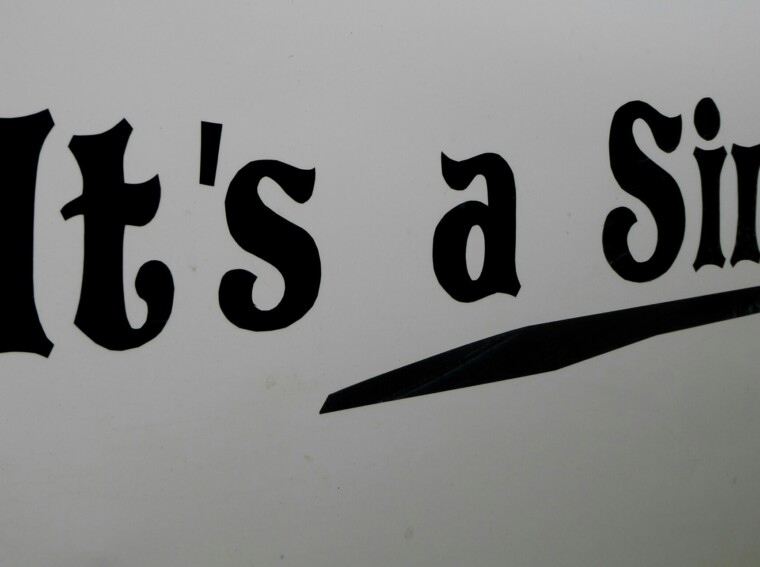Typography goes beyond simply choosing attractive letterforms; it’s about creating a visual harmony that resonates with the viewer. Among the vast range of typefaces, Gothic typography—also known as blackletter fonts —holds a unique place due to its deep historical significance and distinctive visual impact.
In this article, we’ll explore the captivating history, versatile applications, and ongoing relevance of Gothic typography, highlighting why it remains a favored choice among graphic designers, typographers, and branding experts today.
Gothic Typography: A Journey Through History
Gothic typography, or blackletter script, originated in medieval Europe around the 12th century. These ornate, calligraphy-inspired typefaces became the standard for manuscripts, religious texts, and official documents. With bold, angular strokes, intricate flourishes, and striking contrasts, Gothic fonts conveyed authority and tradition, symbolizing cultural prestige and scholarly excellence.
Andie Letourneau, typographer and designer, offers her expert perspective:
“Gothic typography carries an unmatched gravitas and authenticity that modern fonts lack. Its deep historical roots immediately elevate any design, infusing it with credibility and timeless appeal.” – Andie Letourneau
Defining Characteristics of Gothic Typography
Several key features distinguish Gothic fonts from other typefaces:
- Angular, Sharp Letterforms: Gothic typefaces showcase structured, angular forms derived from medieval calligraphy.
- Heavy Visual Impact: The striking contrast between thick and thin strokes results in a dense, bold style, making it highly memorable and visually impactful.
- Elaborate Decorations: Many Gothic fonts feature decorative elements that enhance their aesthetic richness and historical authenticity.
These defining traits ensure that Gothic typography continues to captivate and maintain its place in contemporary design.
Modern Uses of Gothic Typography
Originally associated with historical documents and religious texts, Gothic fonts have evolved to meet the demands of modern design, finding a place in branding, music, and digital media.
- Branding and Logos: Modern brands often use Gothic fonts to evoke tradition, sophistication, and trust. They work especially well for companies seeking to convey a sense of heritage, such as breweries, luxury brands, and artisanal products.
- Editorial and Print Design: In editorial design, Gothic typography communicates authority and seriousness. It’s ideal for book covers, magazine titles, and headers, where strong visual presence and legibility are key.
- Music and Subculture Branding: Gothic fonts are closely linked to subcultures such as metal, goth, and alternative music. Their bold, rebellious aesthetic is perfect for album covers, merchandise, and promotional materials.
- Digital and Web Design: Despite its traditional roots, Gothic typography has found a place in digital media. Designers use blackletter scripts to create attention-grabbing headlines, banners, and digital posters that leave a lasting impression.
Choosing the Right Gothic Typeface: Tips for Effective Use
When incorporating Gothic typography into your designs, there are several practical considerations to keep in mind:
- Legibility: Gothic fonts can be visually complex, so testing readability at different sizes and on various devices is essential.
- Contextual Relevance: Ensure the chosen Gothic font aligns with the emotional tone and purpose of your design.
- Pairing with Simpler Fonts: To enhance readability, pair Gothic typefaces with cleaner, simpler fonts. This balance ensures a harmonious visual flow and effective communication.
As Andie Letourneau emphasizes:
“Gothic fonts are powerful, but subtlety is important. Too much ornamentation can overwhelm a design, so pairing elaborate Gothic typefaces with minimalist elements can create a sophisticated, impactful result.” – Andie Letourneau
Final Thoughts
For designers seeking high-quality Gothic typefaces, Creative Fabrica offers a comprehensive selection tailored to a range of design projects, from branding to editorial layouts and digital content creation. Their diverse collection provides the creative freedom to choose typefaces that best fit your design’s aesthetic and communication goals.
Gothic typography, deeply rooted in tradition, continues to offer modern designers unmatched visual impact, authority, and cultural resonance. Understanding its defining characteristics, strategic application, and thoughtful selection enables designers to harness the timeless power of Gothic fonts, delivering bold and memorable visual communication in today’s diverse design landscape.
